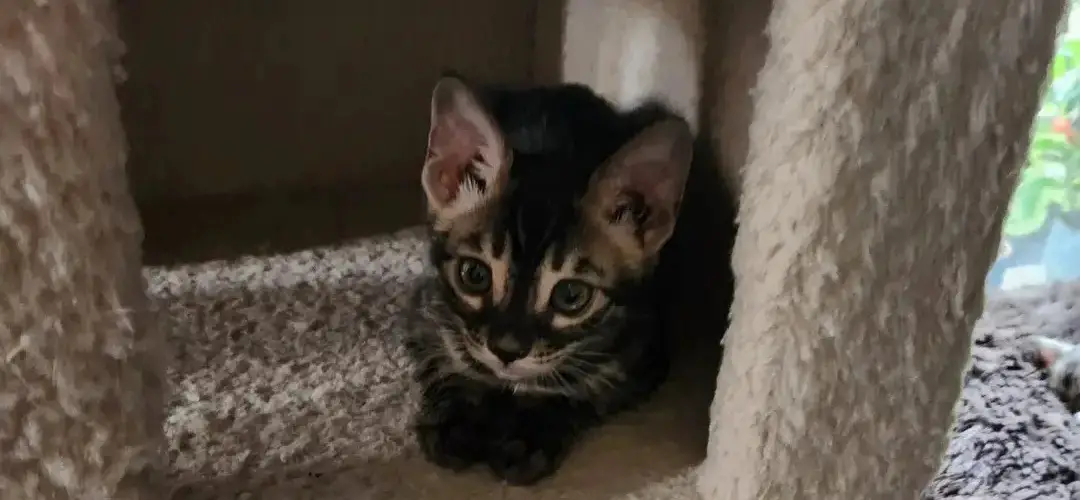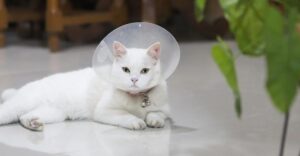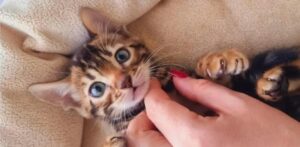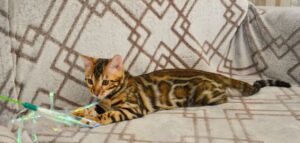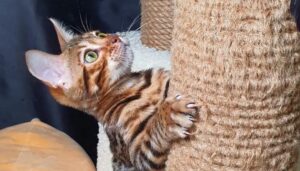Your cat suddenly bolts out of the litter box like it’s on a mission while you’re relaxing on the couch!
You’re in the right place if you’ve ever wondered why your feline companion behaves in this way.
I’ll go into the intriguing realm of why cats occasionally run off after using their litter box in this post, revealing the causes of this odd behavior in cats.
Cat Runs Out of Litter Box After Peeing
Based on my observations around cats and my opinion, your cat may run out of a litter box after peeing due to litter box aversion, medical issues, dirty litter box, litter box location, relief and excitement, temperature, sensitivity, cognitive dysfunction, and habit.
Let’s break it down further one by one for better understanding…
In my opinion as a cat owner, here are some of the most common reasons a cat might run out of a litter box after peeing:
1. Litter Box Aversion
Have you ever noticed your cat hesitating or even avoiding the litter box? It’s not uncommon for cats to develop litter box aversion due to several factors.
In my opinion, here are a few possible reasons:
- Unpleasant Odors: Cats have a keen sense of smell and can be put off by strong odors in the litter box. If the box isn’t cleaned regularly, it can become a breeding ground for bacteria and unpleasant smells, leading to cat litter box aversion.
- Uncomfortable Litter: Cats prefer a comfortable and soft litter that doesn’t irritate their paws or skin. If the litter is too coarse or rough, your cat might avoid the box altogether.
- Litter Box Size: If the litter box is too small for your cat, they might feel cramped or uncomfortable, leading to litter box aversion.
To identify litter box aversion, look for signs such as:
- Your cat hesitates or avoids the litter box
- They start to pee outside the box when they get close to the box
- They show signs of stress or discomfort around the litter box
To fix litter box aversion, I suggest the following:
- Clean the Litter Box Regularly: Scoop out solid waste daily and change the litter completely every 7–10 days.
- Choose a Comfortable Litter: Opt for a soft, odor-absorbing litter that your cat finds comfortable.
- Increase Litter Box Size: Ensure the litter box is large enough for your cat to comfortably turn around and move about.
2. Medical Issues
Sometimes, litter box aversion can be a sign of underlying medical issues. It’s crucial to rule out any health problems that might be causing your cat’s behavior.
Here are a few possible medical issues:
- Urinary Tract Infections (UTIs): Cats can develop UTIs, which can cause pain and discomfort while peeing, leading them to avoid the litter box or running out of the litter box after peeing.
- Kidney Stones: Kidney stones can cause severe pain and discomfort, making it difficult for your cat to pee in the litter box.
- Arthritis: Arthritis can cause joint pain and stiffness, making it uncomfortable for your cat to enter or exit the litter box easily.
To identify medical issues, look for signs such as:
- Pain or Discomfort: Your cat shows signs of pain or discomfort while peeing or defecating.
- Changes in Appetite or Water Intake: Changes in appetite or water intake can indicate underlying medical issues.
- Changes in Litter Box Behavior: If your cat starts to avoid the litter box or shows signs of stress around it.
To fix medical issues, I advise the following:
- Consult a Veterinarian: Schedule a vet visit to rule out any underlying medical issues.
- Follow Treatment Recommendations: If your cat has a medical issue, follow the treatment recommendations provided by your veterinarian.
- Provide a Comfortable Environment: Ensure your cat has a comfortable and stress-free environment to help alleviate any discomfort.
3. Dirty Litter Box
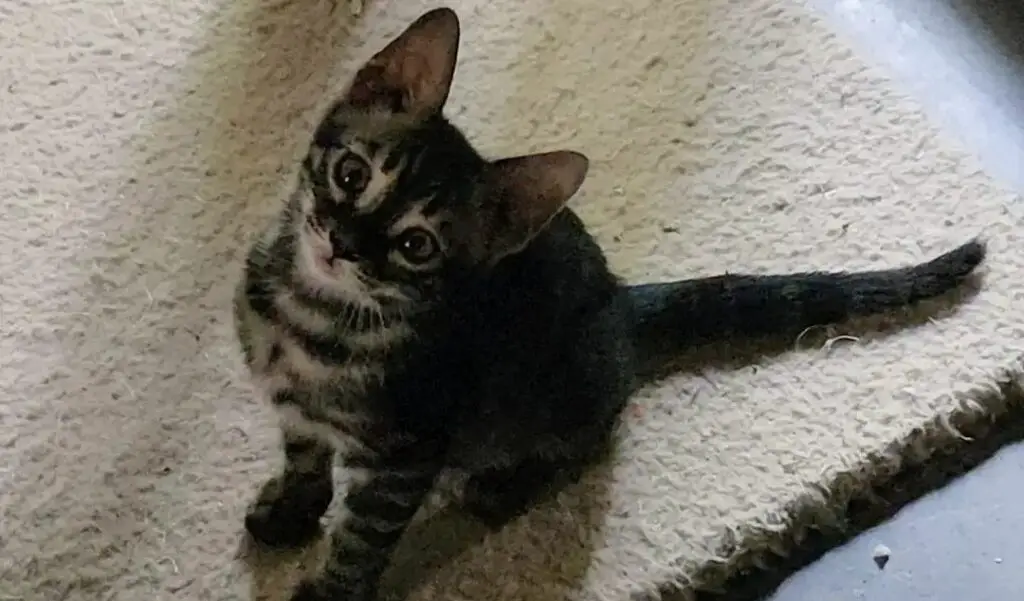
A dirty litter box can be a significant contributor to litter box aversion. Cats are meticulous about cleanliness and prefer a clean and odor-free environment.
Here are a few reasons why a dirty litter box might cause litter box aversion:
- Unpleasant Odors: Cats are sensitive to smells and can be put off by strong odors in the litter box.
- Dirty Litter: If the litter isn’t changed regularly, it can become a breeding ground for bacteria and unpleasant smells.
- Clumping Issues: If the litter clumps poorly, it can be difficult to clean and can lead to unpleasant odors.
To identify dirty litter box issues, look for signs such as:
- Unpleasant Odors: Your cat shows signs of discomfort or stress due to unpleasant odors.
- Dirty Litter: The litter box hasn’t been cleaned regularly, leading to a buildup of dirt and debris.
- Clumping Issues: The litter clumps poorly, making it difficult to clean.
To fix dirty litter box issues, here’s what I suggest:
- Clean the Litter Box Regularly: Scoop out solid waste daily and change the litter completely every 7–10 days.
- Choose a Good Litter: Opt for a litter that clumps well and is easy to clean.
- Increase Litter Box Cleaning Frequency: If your cat has a medical issue or litter box aversion, consider increasing the frequency of litter box cleaning.
4. Litter Box Location
One possible reason for your cat’s hasty exit after peeing is the location of the litter box.
Cats are naturally clean animals, and they prefer to have their privacy when using the litter box.
So, if the box is placed in a noisy or high-traffic area, your cat may feel uncomfortable and anxious, prompting them to hurriedly leave after urinating.
How to identify:
Observe your cat’s behavior during and after using the litter box.
If they consistently run out immediately after peeing and seem restless or on edge, it may indicate a dislike for the litter box’s location.
Here’s my opinion on how to fix it:
To address this issue, I suggest you consider moving the litter box to a quieter and more secluded area of your home.
This could be a spare room, a less frequented corner, or even a bathroom with a closed door.
Make sure the location is easily accessible and comfortable for your cat, allowing them to feel at ease while doing their business.
5. Relief and Excitement
Another possible reason for your cat’s sudden evacuation is a surge of relief and excitement after emptying their bladder.
Urinating provides a sense of physical relief, and some cats may experience a burst of energy or euphoria afterward.
This can lead to a quick sprint out of the litter box as if they are celebrating their successful bathroom visit.
How to identify:
Watch your cat’s behavior closely after they finish peeing. Do they sprint out of the litter box with a burst of energy?
Are they playful or exhibiting excessive excitement immediately afterward? These signs may indicate that your cat is simply expressing their joy and relief.
In my opinion, here’s how I suggest you fix this issue:
In this case, there is no need to fix anything, as your cat is simply displaying natural behavior.
However, if their exuberance becomes disruptive or causes accidents, consider providing them with interactive toys or playtime after they use the litter box.
This can redirect their energy and help them burn off any excess excitement in a more appropriate manner.
6. Temperature Sensitivity
Cats can be sensitive to temperature changes, and this sensitivity may play a role in their behavior after using the litter box.
If the litter is too cold or too warm, your cat may feel uncomfortable and rush out of the box to find a more comfortable spot after peeing.
How to identify:
Pay attention to your cat’s body language and their reaction to the litter box.
If they consistently sprint out after peeing and exhibit signs of discomfort, such as excessive grooming or pawing at the ground, it may suggest temperature sensitivity.
Here’s what I advise you to do to fix this issue:
Ensure that the litter box is kept in an area with a moderate temperature.
Avoid placing it near air conditioning vents or in direct sunlight, as extreme temperature changes can make the litter uncomfortable for your cat.
Additionally, consider using a litter with temperature-regulating properties or providing a cozy mat or blanket nearby to offer a comfortable surface for your cat to step onto after using the appropriate box.
7. Cognitive Dysfunction
Cognitive dysfunction, also known as feline dementia, can affect older cats and may contribute to their unusual litter box behavior.
Cats with cognitive dysfunction may become disoriented or forgetful, leading them to leave the litter box quickly after peeing.
How to identify this issue:
Look for other signs of cognitive dysfunction in your cat, such as confusion, increased vocalization, changes in sleep patterns, or decreased grooming.
If your cat exhibits these behaviors along with running out of the litter box after peeing, cognitive dysfunction may be a contributing factor.
How to address this issue:
Consult with your veterinarian to determine if cognitive dysfunction is the underlying cause. They may recommend medications or supplements that can help manage the symptoms.
Additionally, provide a litter box with low sides for easy access and consider placing it in a quiet and familiar location to reduce stress and confusion.
8. Habit
Sometimes, a cat’s behavior of running out of the litter box after peeing is simply a learned habit.
This can occur if the cat has had previous negative experiences in or around the litter box, leading them to associate it with discomfort or fear.
How to identify:
Observe your cat’s behavior during and after using the litter box. If they consistently exhibit signs of anxiety or discomfort, such as rapid breathing, tense body posture, or avoidance behaviors, it may indicate a learned habit.
In my opinion, here’s how to address:
Create a positive association with the litter box by providing treats or praise immediately after your cat uses it.
Gradually introduce new litter box experiences, such as different types of litter or covered boxes, to help your cat overcome any negative associations.
Patience and positive reinforcement are key in breaking the habit and encouraging your cat to feel more comfortable in the litter box.
Related: Cat behavior concerns.
How to Address a Cat that Runs Out of Litter Box After Peeing
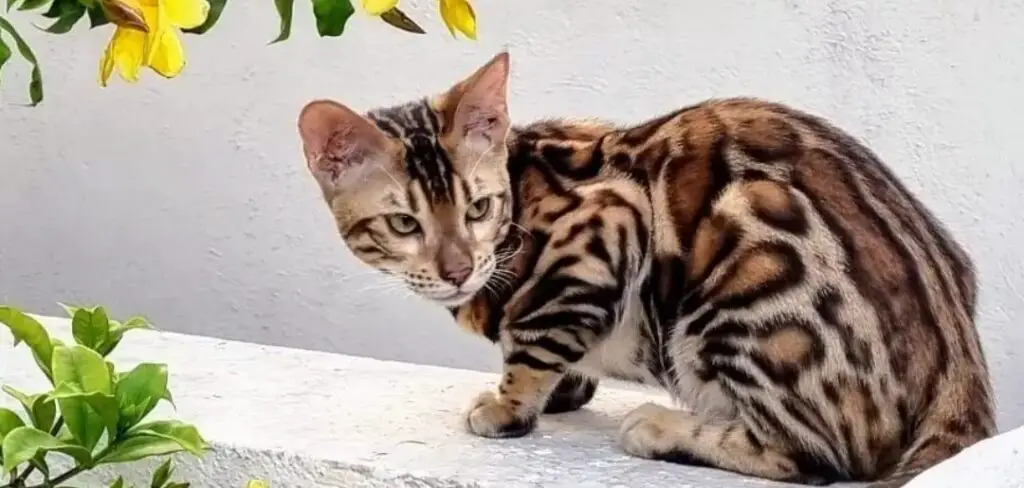
When your cat starts running out of the litter box after peeing, it could be a sign of discomfort or dissatisfaction with their litter box situation.
To address this issue, first, make sure the litter box is clean and odor-free, as cats are sensitive to smells.
Secondly, consider the type of litter you’re using – some cats prefer a specific texture or scent, so experimenting with different options might help.
Thirdly, make sure the litter box is in a quiet and accessible location, away from loud noises or high foot traffic areas.
Additionally, provide multiple litter boxes in different areas of your home, especially if you have a multi-story house.
Lastly, if the problem persists, it’s important to consult with a veterinarian to rule out any underlying health issues that may be causing your cat’s behavior.
Conclusion
Finally, the enigma of why cats bolt from their litter box after urinating has been solved.
These furry pals have explanations for their odd habit, ranging from instinctive behavior to a desire for cleanliness.
You’ll understand your cat’s method of maintaining order in their peculiar manner the next time they dart out of the litter box.

